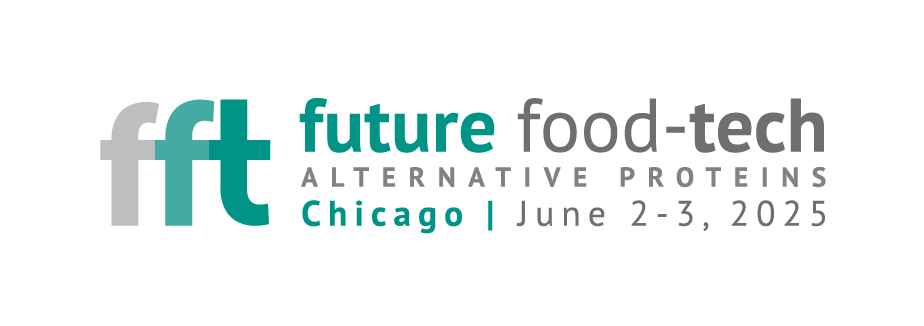What alt-protein products do consumers want to see on the shelves, and how can industry stakeholders champion strategies to increase acceptance and adoption?
In order to persuade the consumer to swap their favorite meat products for protein alternatives, we must first address what the consumer is looking for. Should we mimic traditional animal products, or aim for a superior alternative? Can we develop delicious alternatives that deliver on taste, texture, price and nutrient density?
Understanding the consumer base is key, and with an increased focus on health and wellness, the category is rising to the challenge with a move away from ultra-processed products, instead prioritising shorter, cleaner ingredients lists.
In advance of the summit, our speakers from SODEXO CAMPUS, VIVICI and TUFTS UNIVERSITY share thoughts on increasing consumer awareness around the benefits of alt-proteins, competing with established food brands, and the biggest barriers to adoption.

What alternative protein products do consumers want to see on the shelves? How can the sector create trustworthy products that can compete with established incumbent food brands?

Rob Morasco, Vice President, Innovation tells that in his experience at SODEXO CAMPUS, “most consumers want ‘alt-products’ that taste like the ‘ordinary animal-based product’ they are trying to eat less of – a burger that tastes like a burger, hot dog that tastes like a hot dog, and so on.”
Suzi Gerber, Principal Investigator, Consumer Behavior and ESG Investing, TUFTS UNIVERSITY points out that there are few alt-protein products with the functionality and structure of those animal-sourced they emulate, giving the example of plant-based cheeses: “Some great for snacking, or melting, or shredding, or browning, or crisping but rarely can one do all of these—and they require different techniques to accomplish well. Even more so for eggs- a scramble doesn’t make a fried egg or a hardboiled egg. There are almost no options for alternative meats that are structured (i.e. everything is burgers, sausages, and nuggets).”
Stephan van Sint Fiet, CEO, VIVICI takes a different approach, focusing on the opportunity to surpass animal-derived alternatives by creating a superior product using protein from fermentation, “we have a unique opportunity to serve consumers that are looking for high-quality, nutritionally optimal protein. To find that, many consumers turn to the Health & Wellness food category and look for protein beverages, bars and ready-to-mix sports nutrition. The consumer is generally very well educated about protein, so it’s a great place to build awareness of the nutritional and environmental benefits consumers can derive from products that use proteins from fermentation.”
On the topic of trust, Rob believes: “Trust is interwoven with ‘brand’ – I’d say the best way to compete is the first question – alt products that taste great and make no excuses for taste, texture, and satisfaction is a very good place to start. When we work on new PB menu items, whether whole-food plant based or using alternative products, the goal is the same: the dish must be Craveworthy and attract the guest just by how great it is.”
For Suzi, appropriate naming and description is key: “Don’t call your product a filet mignon because it is shaped liked one – there are many sensory, hedonic, nutritional, and functional properties that consumers expect in their foods and they can easily be turned off if that food doesn’t meet any single one, let alone several. If your product is only good as a snacking cheese say so- cow’s milk string cheese doesn’t need to be used for pizza, and neither does your cashew cheese spread.”
Her golden rules include: “1. Accurate, not aspirational naming. 2. Keep multi-function versatility in mind in development. 3. More chef-driven cooking instructions. 4. Less emphasis on descriptive text that signal ethical values and more that address convenience and application. 5. Don’t let sensory evaluation and palatability be confused for all domains of acceptance.”
How can the sector improve strategies to increase awareness and education of the benefits of alternative proteins, inspiring dietary and behavioral change?

Stephan: “This is a great question that collectively as an industry we are still trying to answer. My personal take is that we should not focus our consumer narrative on the ingredients, or the technology used to make them, but on the benefits consumers derive from choosing products that contain these ingredients. Think about messaging around health (e.g. ‘good source of highly nutritious protein’), free-from (e.g. ‘free from antibiotics, lactose, cholesterol, etc’), planet (e.g. ‘sustainably produced’).
Rob looks to the environmental benefits as a source of education: “Sustainability is sometimes a better ‘angle’ (carbon, land use, water use, etc) and maybe we make eating healthy more ‘convenient’ for the consumer – a benefit rather than the primary reason to purchase. If you lead with ‘healthier’, the customer could think they are sacrificing flavor in addition to going alt.”
Suzi continues this idea of consumer sacrifice, suggesting that often the best routes for these are indirect: “People want to be healthy but they do not wish to sacrifice in order to get there. We can encourage environmentally sustainable and healthy choices by making products that are in fact improvements but have other, more powerful selling points: taste, texture, cost, convenience, and function. If alternative products are commensurate with conventional products AND are nutritionally and environmentally superior, then substitutions will be more likely.”
Addressing consumer awareness, Suzi believes that the consumer is mindful, but this isn’t always enough to make a difference. Instead, Suzi offers: “More promotional work with restaurants and retailers, major public events, and institutions are needed to keep plant and alternative options front and center with active role modeling of enjoyment (not just in advertisements). For example: these options should be placed in the top 3 of search results online, prominent in offerings and in multiple grocery aisles, featured for reasons that drive choice (not just ethics), and presented alongside other options and not quarantined to special or free-from sections.
More support for scientific research, and elevating people who translate science into multiple sectors (from the culinary to the science, from nutrition to medicine, from science to media etc) is needed. Ultimately, cultural support often requires major systematic change to shift and this requires a whole of society approach for consistent messaging.”
What are the biggest barriers to consumer adoption?

Suzi: “If it is more expensive, doesn’t taste as good, doesn’t remind them of their childhood, isn’t enjoyed by friends and family or other socially important others these are barriers to adoption. Other crucial barriers are that many of these foods require effort seeking them out (inconvenient), new cooking skills or added time (efficacy barriers), and the willingness to develop a taste for a new food and go against the grain (commitment, and innovation adoption). The most potent behavior changes follow necessity (such as when other foods aren’t available or affordable or life threatening events) and climate change and diet-related disease have very long latency periods which don’t translate into urgent enough reasons to shift for those reasons.
Getting people to try foods is easier than getting people to change habits- and we don’t do enough to keep people going for more and we are very quick to release palatable but not perfect foods which fail to convince people that the trade-offs are sufficient.”
Stephan echos the sentiment: “The usual suspects: taste, texture, nutrition, price. Alternative proteins won’t go mainstream until they score on par or better than conventional animal-derived proteins.”
From an operational perspective, Rob identifies “Availability (distribution/supply chain), cost, and lack of understanding of what consumers are looking for. For consumers, I think cost is also a barrier as well as the ‘artificially processed’ opinion – that is very prevalent in the space. We’ve been trained to think that processed=unhealthy.”
In what ways can the widespread adoption of alt proteins be positioned as an instrumental factor in achieving Net Zero commitments?
Stephan: “How we produce our food is a huge part of our environmental footprint, and a growing and more affluent world population means we will see a doubling of protein demand over the next two decades. But we simply can’t sustainably scale the way we produce our animal protein today. There is no future scenario in which we get away with doubling the number of cows, picks, chickens, etc on the planet. Alternative proteins are therefore an inevitability if we want to sustainably feed the world. Our food system will change, be it by disaster or by design. I prefer it to be the later.”
Suzi is in agreement, explaining that the science on this subject is clear and we need to focus our messaging: “It is impossible to achieve climate goals without address the major contributions of animal agriculture. There is too much misinformation that focuses attention on energy and transportation, presenting those things as more important and this crowds out the message. There is also too much emphasis on half-measures, like regenerative agriculture which don’t meaningfully address problems, especially on the global scale. When the messages are divided, you fracture the base of support. We need to focus on presenting this as the central issue, consistently and without conflicting arguments. It is crucial, let’s prioritize it.”
This understanding undeniably varies between generations, Rob believing himself lucky in this sense: “Most Gen Z college-age consumers know carbon impacts – they know that beans have roughly 2% of the impact as beef – or at least that veggies have much less of an impact than animal ag.”
How can the sector leverage consumer segmentation, predictive analytics, and big data to anticipate consumer preferences and needs to optimize pricing strategies and facilitate personalized recommendations to improve the customer experience?
Suzi reveals that this work is currently underway: “This work often evaluates sales and point-of-sale choices, demographic and other contextual segmentation data but not enough is done to examine internal factors. I hope to apply deep learning strategies to understand not just consumer preferences, but the hidden components that drive some of these behaviors so that we can start to find the types of messages that are most effective for each segment. I do not believe that just identifying those who pick what, or are willing to try or pay for something is enough—we have a goal to help shift culture to make decisions for both the common good and individual good. More personalized analyses may help uncover ways to approach the specific segments resulting in messages that are more compelling and ultimately more successful.”
Stephan: “While these are useful tools for the industry, the basics remain simple: consumers want great tasting, nutritious and affordable food, but are also increasingly deciding based the perceived ESG performance of a product. I would urge us (‘the industry’) to walk before we run, i.e. focus on making great products that consumers love and optimize from there.”
Learn more in Chicago on June 17-18, when Future Food-Tech Alternative Proteins gathers 80+ expert speakers to discuss transforming the future of food through protein diversification. Register now for the remarkable opportunity to join 500+ delegates in discovering the next-generation of solutions, develop business-driven connections, and sample delicious new alt-protein products: www.futurefoodtechprotein.com/register

 CLOSE
CLOSE







